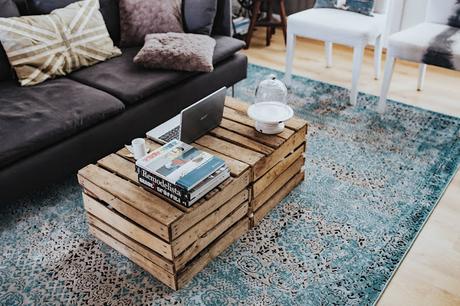
Laminate flooring is thin and built with a type of fibreboard, unlike engineered wood flooring which is constructed with solid hardwood or plywood. Laminate flooring is usually difficult to set up on surfaces that have the slightest hint of imperfection, hence, it is recommended to use underlayment for a supplement.
Underlays are essential for laminate flooring for the following reasons:
Improves Subfloor Deficiencies
Subfloors are usually featureless and not perfectly flat. After removing the existing flooring, exposed subfloors are usually dotted with splinters, nail holes, pits, gaps, and grooves. A new subflooring can also be imperfect due to seamed OSB or Plywood sheets.
Engineered wood or solid hardwood can be used to cover up small gaps easily, passing directly over blotches so that there is no need for underlayment. Ceramic and porcelain tiles can also be used to cover up some small holes and gaps, filling them in with mortar works. Still, there will eventually be subfloor imperfections arising from laminate flooring. Such laminate damages can be prevented by underlayment.
Softens Footfall
When you are doing the flooring on hard surfaces like concrete, you may need the extra padding from underlayment to provide a softer surface to walk on. With wood subflooring, there is already a good amount of flexibility, and the surface of the laminate will only be slightly softened by underlayment. On the other hand, concrete, brick, and similar forms of masonry will need all the softening properties that underlayment offers.
Laminate underlayment provides a softer landing for your foot, however, it tends to give the flooring a hollow feel. The feeling comes out distinct when you walk from a harder surface like tile, to a floor with laminate underlayment. You will get an almost similar feeling on your footfall with underlaid laminate flooring as you would get with real wood flooring.
Sound Absorption
Laminate flooring is so thin that it has to be complemented with underlayment to feel and act similar to real wood. Take a look at the sound transmission. There are many reasons why foam padding under solid hardwood is unnecessary. One reason is that the denseness of hardwood tends to prohibit the transmission of sound within the room and to the floors below.
Regulates Moisture
Important point on laying laminate flooring to bear in mind. If there is a possibility of moisture spreading upwards from a concrete slab, cement board, or tile, then moisture-proof underlayment or vapour barrier will be necessary. Even in a non-climate controlled-space such as a crawlspace, flooring, or wood subfloor can be exposed to rising moisture. Traditional foam underlayment will limit the spread of moisture, but there are certain underlayments that need a distinct 6 mil. polypropylene vapour barrier.
If you enjoy my blog, please consider following me on Bloglovin'
